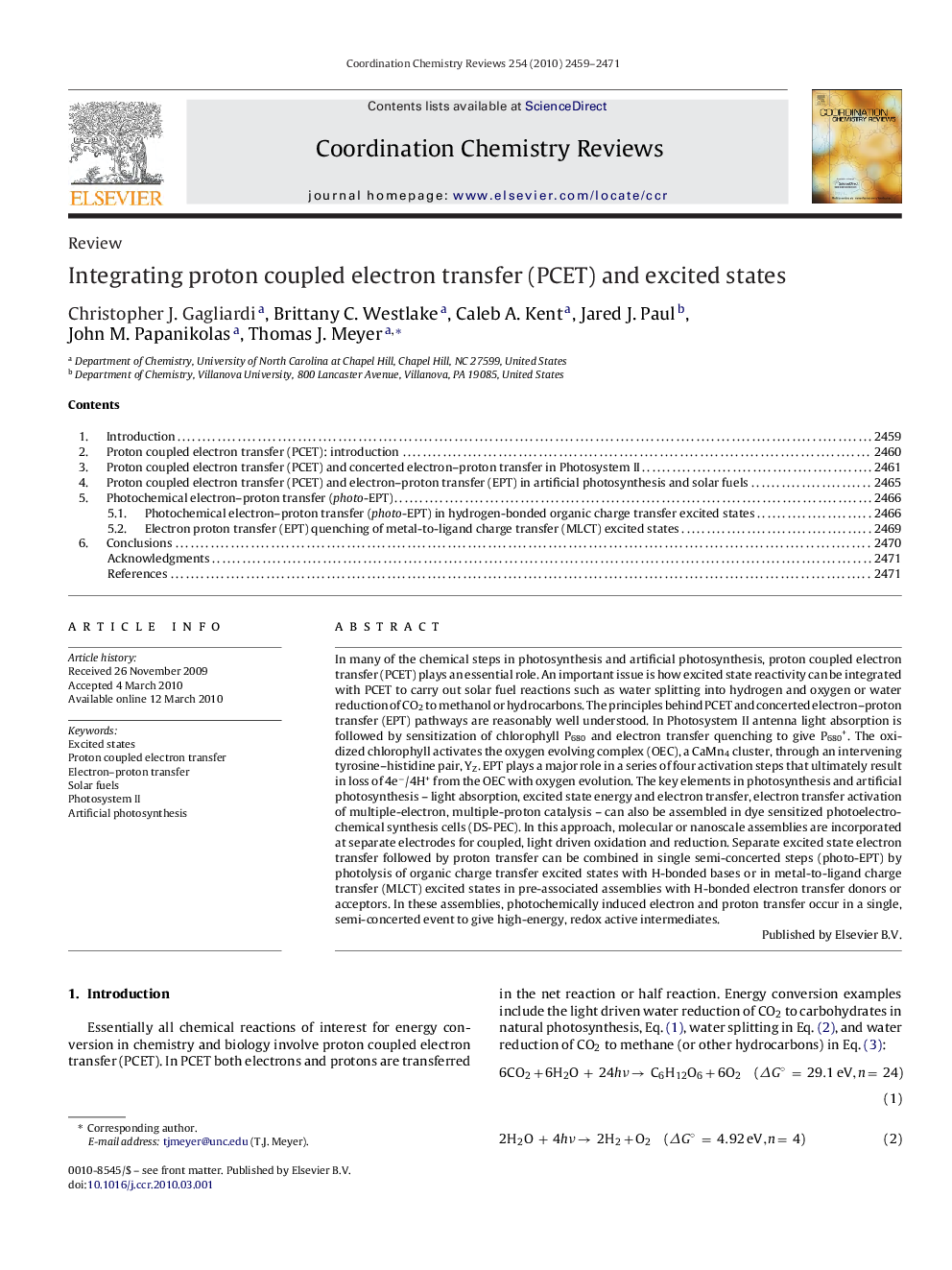| کد مقاله | کد نشریه | سال انتشار | مقاله انگلیسی | نسخه تمام متن |
|---|---|---|---|---|
| 1299800 | 1498789 | 2010 | 13 صفحه PDF | دانلود رایگان |

In many of the chemical steps in photosynthesis and artificial photosynthesis, proton coupled electron transfer (PCET) plays an essential role. An important issue is how excited state reactivity can be integrated with PCET to carry out solar fuel reactions such as water splitting into hydrogen and oxygen or water reduction of CO2 to methanol or hydrocarbons. The principles behind PCET and concerted electron–proton transfer (EPT) pathways are reasonably well understood. In Photosystem II antenna light absorption is followed by sensitization of chlorophyll P680 and electron transfer quenching to give P680+. The oxidized chlorophyll activates the oxygen evolving complex (OEC), a CaMn4 cluster, through an intervening tyrosine–histidine pair, YZ. EPT plays a major role in a series of four activation steps that ultimately result in loss of 4e−/4H+ from the OEC with oxygen evolution. The key elements in photosynthesis and artificial photosynthesis – light absorption, excited state energy and electron transfer, electron transfer activation of multiple-electron, multiple-proton catalysis – can also be assembled in dye sensitized photoelectrochemical synthesis cells (DS-PEC). In this approach, molecular or nanoscale assemblies are incorporated at separate electrodes for coupled, light driven oxidation and reduction. Separate excited state electron transfer followed by proton transfer can be combined in single semi-concerted steps (photo-EPT) by photolysis of organic charge transfer excited states with H-bonded bases or in metal-to-ligand charge transfer (MLCT) excited states in pre-associated assemblies with H-bonded electron transfer donors or acceptors. In these assemblies, photochemically induced electron and proton transfer occur in a single, semi-concerted event to give high-energy, redox active intermediates.
Journal: Coordination Chemistry Reviews - Volume 254, Issues 21–22, November 2010, Pages 2459–2471